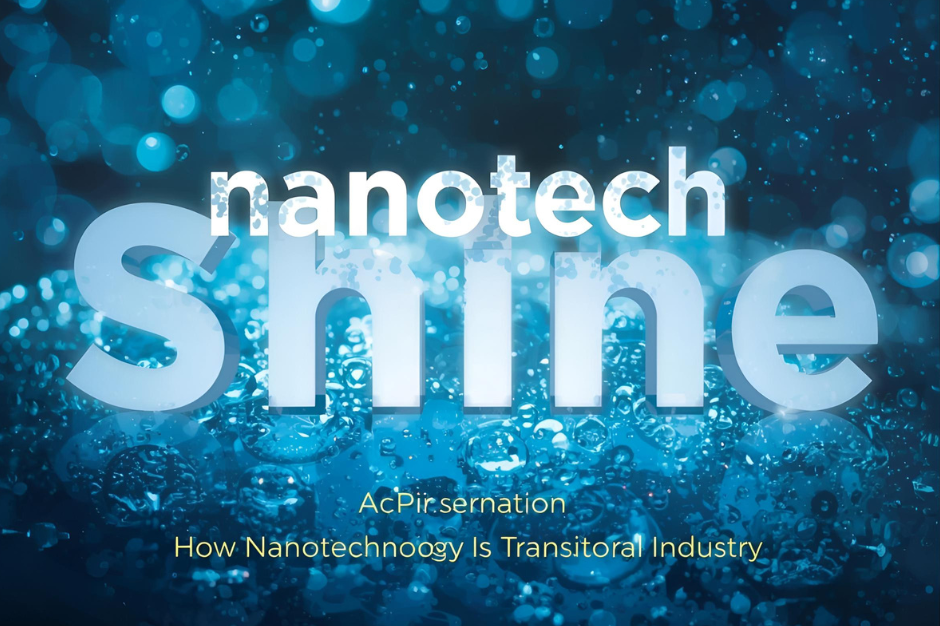Nanotech Hits the Shine: How Nanotechnology Is Transforming the Car-Wash Industry
Harnessing Microscopic Bubbles for Cleaner Cars and Greener Car Wash Operations

In the world of car cleaning, the humble bucket, sponge and hose are being challenged by something a little smaller — much, much smaller. Enter nanotechnology. By “nano” we mean structures, coatings or bubbles measured in the realm of one-billionth of a meter, working on surfaces and fluids with a precision we only recently imagined.
Why the car-wash industry cares about tiny tech
The car-wash business has always faced twin pressures: making vehicles look pristine (bright finishes, spotless surfaces) and doing so efficiently (less water, chemistry, labour). With rising costs, environmental regulations, and consumer demand for “green” and high-quality finishes, operators are looking to any advantage they can get.
Nanotechnology offers several competitive wins:
- Better cleaning and protection via coatings that repel dirt or water, making finishes last longer.
- Use of specialized cleaning fluids or bubbles (e.g., “nanobubbles”) that enhance cleaning performance while reducing resources. For example, the company Moleaer Inc. uses nanobubble systems for car-wash reclaim water and fresh water systems.
- Environmental benefit: lower freshwater consumption, less waste, fewer chemicals or sludge hauling.
What the tech looks like in practice
Here are some real-world applications (yes, we get nerdy):
Nanobubble-enhanced water systems
Nanobubble technology is transforming water use in the car wash industry by improving cleaning efficiency and sustainability. These microscopic bubbles—thousands of times smaller than a human hair—carry high oxygen levels that oxidize contaminants, lift dirt, and enhance detergent performance. In car wash reclaim systems, nanobubbles reduce sludge buildup, eliminate odors, and improve water clarity, allowing greater reuse of treated water. Companies like Moleaer have shown that nanobubble systems can cut fresh water consumption and chemical use by up to 30%, helping operators lower costs while promoting eco-friendly, high-performance car cleaning.
For a car-wash operator, this means using fewer gallons of fresh water per car, less hauling of sludge from tanks, and better clarity in the reclaim cycle.
Nano-coatings & cleansers
On the vehicle surface the tech shows up as advanced cleaning agents and protective layers. For instance:
- The product line NANOX claims to “clean and penetrate all surfaces by removing dirt and oil on a microscopic level … protect against discolouration … repel everyday dirt and residues”.
- A “car wash with dustproof properties” from an Iranian manufacturer uses nanoparticle detergents that form a high-adhesion superficial layer on the car body, reduce dust adsorption via anti-static properties and provide a gloss finish.
- Cleaning/detailing companies talk about nano-fortified waxes and finishers (e.g., the line from Qual Chem: “Q NanoPel”, “Q NanoDry” etc) that improve drying, reduce spotting and improve shine.
The benefits (and the caveats)
Upsides
- Resource savings: With nanobubble systems, less fresh water is needed, more reuse is possible, fewer chemicals.
- Better finish, higher customer satisfaction: A car that comes out cleaner, dries faster, shines longer, bugs don’t cling as much.
- Environmental branding: Operators can legitimately say “we use advanced nanotech to reduce water use & chemicals”—a marketing advantage in many markets.
- Potential cost-savings (over time): Lower water bills, lower chemical costs, less sludge hauling, possibly smoother operations.
But, let’s be honest – the caveats
- “Nano” is sometimes used as a marketing word with fuzzy meaning. As the trade article puts it: “Virtually all of today’s leading car care companies engineer their compounds on a molecular level … Nano refers to particles one-billionth of a meter or less in size.” So some claims may stretch reality.
- Up-front cost and integration: Systems like nanobubble generators or reclaim upgrades need capital and maybe infrastructure changes.
- Longevity & maintenance: A nano coating might be great, but if used in a harsh wash environment with strong chemicals or brushes the performance may degrade. Indeed some users report short life of “nano-wash” in practice.
- Regulation and unknowns: The broader nano-materials world still grapples with regulation, monitoring of environmental and health impacts (though mostly outside the immediate car-wash application).
Strategic considerations for operators
If you’re running or planning a car-wash business (especially in the Philippines or Southeast Asia where water scarcity and cost pressures are real) and you want to leverage nanotech, think about:
- Start-small pilot test: Choose one line or bay, integrate a nano-coating or nanobubble system, measure before/after water consumption, chemical use, customer feedback.
- Marketing the promise + managing expectations: Educate customers: “Yes, this is nano-enhanced but it doesn’t mean zero maintenance forever”.
- Pricing model: Because of higher cost you may create a “premium nano-wash” service tier: higher price, faster turnaround, reduced residues, better finish.
- Training and maintenance: Staff must know how to handle nano-coatings (e.g., best drying techniques, avoid aggressive brushes) and maintain reclaim/water-quality equipment properly.
- Link to sustainability: Tap into water conservation narrative—especially in places like Metro Manila or provinces where water supply is an issue. Demonstrable water savings = good story.
- Partner with supplier/expert: Technology providers (like Moleaer) can help integrate the system, tailor solutions and monitor performance.
Conclusion
Nanotechnology isn’t a magic wand, but it is a pretty powerful toolkit for the modern car-wash business. By harnessing very fine-scale materials and phenomena (whether bubbles that treat water more thoroughly or coatings that repel grime at a microscopic level), car-wash operators can raise the game: cleaner finishes, less resource waste, happier customers and stronger sustainability credentials. The key is to approach it with realistic expectations, good implementation and smart marketing. For those willing to invest in the nano-edge, the payoff can be more than surface-deep.
